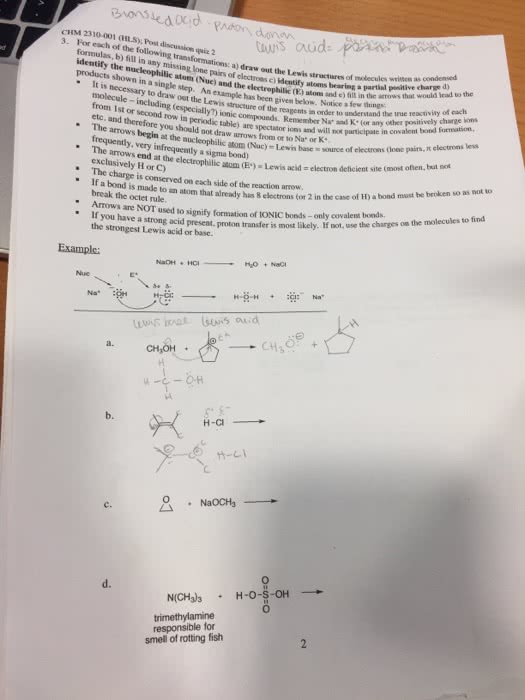CHEM266 Chapter Notes - Chapter 7: Electrophile, Substitution Reaction, Nucleophile
72 views2 pages
26 Oct 2016
School
Department
Course
Professor
Document Summary
Substitution reaction: atom or group of atoms is replaced by another atom or group of atoms. Nucleophile: lewis bases, electron-rich, can be negatively charged or neutral and must have a lone pair of electrons to donate to the electrophile. Electrophile: lewis acids, electron-deficient, can be positively charged or neutral, and accept electrons from the nucleophile (to accept electrons, must have an empty antibonding orbital) Leaving group: must leave as a relatively stable, weakly basic molecule or ion. Biomolecular: rate of reaction dependent on concentration of nucleophile and electrophile, reaction rate is second-order. Rate of reaction = k[nucleophile][electrophile], where k = rate constant. If any concentration doubles, rate of reaction doubles. Activation energy (ea): minimum kinetic energy molecules must have for a reaction to occur. Transition state: hypothetical species existing between reactants and products where bonds are forming and breaking during this high-energy activated complex phase.
Get access
Grade+20% off
$8 USD/m$10 USD/m
Billed $96 USD annually

Homework Help
Study Guides
Textbook Solutions
Class Notes
Textbook Notes
Booster Class
40 Verified Answers
Class+
$8 USD/m
Billed $96 USD annually

Homework Help
Study Guides
Textbook Solutions
Class Notes
Textbook Notes
Booster Class
30 Verified Answers
Related textbook solutions
Chemistry: Structure and Properties
2 Edition,
Tro
ISBN: 9780134293936
Basic Chemistry
5 Edition,
Timberlake
ISBN: 9780134138046
Principles of Chemistry Molecular Approach
4th Edition,
Tro
ISBN: 9780134112831
Chemistry: Structure and Properties
2nd Edition,
Tro
ISBN: 9780134293936
Principles of Chemistry Molecular Approach
3rd Edition, 2014
Tro
ISBN: 9780321971944
Chemistry: A Molecular Approach
3rd Edition,
Tro
ISBN: 9780321809247
Chemistry: A Molecular Approach
5th Edition,
Tro
ISBN: 9780134874371
Principles of Chemistry: A Molecular Approach
4th Edition,
Tro
ISBN: 9780134895741
Chemistry: The Central Science
14th Edition, 2017
Brown
ISBN: 9780134414232

